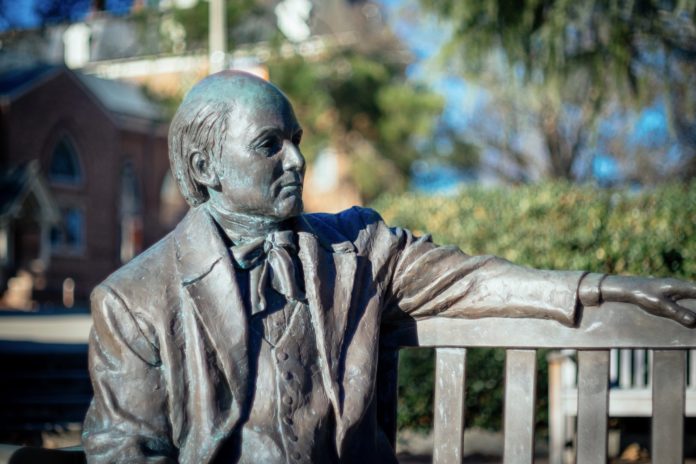(This article was published Tuesday, March 6, 2007, in The Macon Telegraph.)
VIDEO OF NEW BUILDING FROM THE MACON TELEGRAPH
By Jennifer Burk
TELEGRAPH STAFF WRITER
Mercer University’s new Science and Engineering Building has high-tech classrooms and high-tech laboratories and high-tech equipment.
It’s almost enough to make students believe everything in the building is “high-tech.” But not quite.
“Being old-fashioned as we are, the physics department requested black slate (chalk) boards,” Randall Peters, chairman of the physics department, said half-jokingly.
Work began on the $14 million project in December 2005. Construction has remained on track, and furniture will start going into the building about mid-April, said Ronny Williams, vice president of Chris R. Sheridan & Co. General Contractors. Classes in the new building will start in the fall.
The Science and Engineering Building, located on the corner of College and Prince streets on Mercer’s campus, is intended to enhance Mercer’s partnership with Robins Air Force Base, said M. Dayne Aldridge, dean of Mercer’s School of Engineering.
Forty percent to 50 percent of Mercer graduates go to work at the base, and 20 percent to 40 percent work at the base while they are students, he said.
The new building, which is half engineering and half physics, has much more lab space, most notably for student projects, he said.
Most lab equipment will come from the old engineering building, but the school also is purchasing more than $200,000 worth of new equipment, Aldridge said.
Twenty small labs, with coded locks on the doors, are designed specifically for students, he said. Before, students always had to pack up their work and take it with them when they left the lab.
“Now they’ll have a space of their own,” Aldridge said.
There also will be labs to study chemical and electronic actions, as well as classrooms and a 147-seat auditorium.
Peters said the labs have been personalized for use.
“They have folded into the laboratories exactly what we wanted,” he said. “We have the ability to do some novel experiments, things that, I think, have never been done before.”
Also, the physics department hopes to use the auditorium to hold a “physics circus,” which is an event that demonstrates the principles of physics to the public, he said.
“This auditorium is perfect for that,” he said.
The space alone is an improvement over what physics currently has in the Willet Science Center, where a large auditorium takes up most of the space on the first floor, Peters said.
The new building also features a room with a seismograph built 20 feet into the ground. The seismograph is surrounded by concrete and is insulated for temperature control.
“When there’s an earthquake in the world, this block ought to move and (the) seismograph will pick it up,” Aldridge said.










